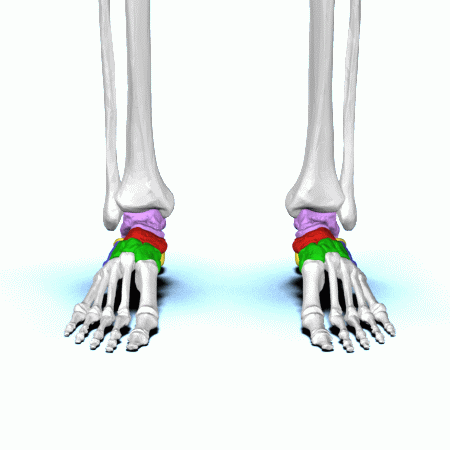
What is a Tarsal Coalition?
Tarsal coalition is an abnormal connection between two bones that can occur in the back of the foot. These abnormal connections can include bone, cartilage or fibrous tissue and can lead to pain and dysfunction of one or both feet. The tarsal bones consist of the calcaneus, talus, navicular, cuboid and cuneiform bones. These bones work together to provide midfoot and rear foot motion, and are vital for normal ambulation.
Causes
The most common cause of tarsal coalitions or abnormal connections of these tarsal bones occur during embryonic growth or fetal development. This is a result of the bones not performing properly or forming proper connections. Other possible causes can occur and cause tarsal coalitions, such as infection, arthritis, or trauma.
Symptoms
Early on, these tarsal coalitions or abnormal connections may not cause any pain or dysfunction. However, as individuals begin to mature and bone growth continues, pain can develop in children by age of 9-16. In addition, pain can occur at sites of the coalition after injuries like fractures or sprains. There is a long list of symptoms of tarsal coalitions that include pain when standing or walking, tired or fatigued legs, muscle spasms, flat feet, walking with a limp, or stiffness in the foot and the ankle.
Diagnosis
Tarsal coalition can be difficult to identify in both the pediatric in adult population. As the bones develop and mature, identification is easier. Usually a diagnosis can not be made solely from a physical exam, like the range of the rear foot or adjacent spasticity of muscles or tendons. Often an X-ray is utilized to identify the coalition, however sometimes a CT scan or an MRI may provide valuable information. In addition, a diagnostic injection can be used to rule out individual joint pain.
Non-Surgical Treatment
At our clinic, our goal is to perform non-surgical treatment to reduce symptoms and alleviate pain. We have developed advanced protocols and have a high success rate with non-surgical intervention. Depending on the coalition, there are many useful tools including oral medications, physical therapy, injections, custom molded prescription orthotics, and immobilization.
Surgical Treatment
If the patient’s symptoms continue to get worse and conservative intervention does not improve overall function of the foot, surgical intervention might be warranted. Prior to surgical intervention, advanced imaging is useful to help map out the location of the actual coalition in precise detail. Surgical treatment can include just general section of the coalition to both resection and reconstruction or fusion of joints.






